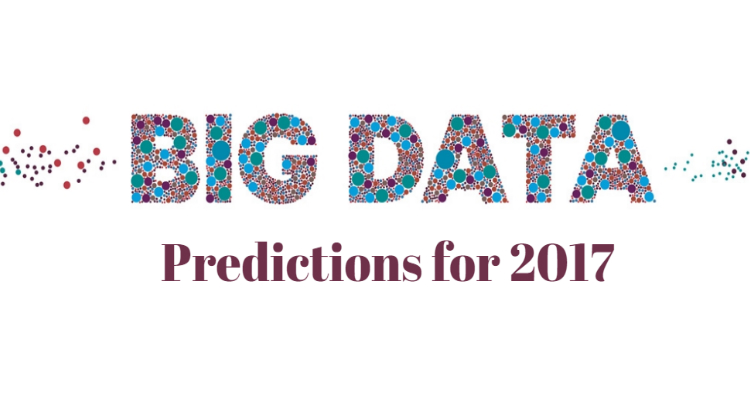From an IT perspective, last month of the year is usually full of predictions from market analysts, drawing attention towards and putting forth the gains and losses, innovation and transformation, from the data center industry and other verticals. 2016 was a year filled with amazement, given the technological evolution and increased adoption of new methods such as cloud solutions, big data, and the the Internet of Things (IoT).
According to Wikibon, the global big data market will reach $92.2B by 2026, representing a 14.4 percent of compound annual growth rate. With the tremendous growth rate, there's been a change in the way market functioned such as growth in challenges, demand for distinct skill requirements, and modified vendor landscape. 2017 is definitely going to be busy year for big data professionals. Let's take a closer look at some predictions from market analysts.
1. More Data
The data explosion is not going to stop; instead we'll be dealing with a great amount of data than ever before and that's for sure. A research from IDC on behalf of Dell EMC reported that the world's storage system multiplying and that at the end of 2017 the system will carry nearly 17.6 trillion GB of data. All the data growth comes from other IT sources such as IoT, social media and the expansion of mobile devices.
2. Increased expenditure
More data storage and analysis means more capital investment. IDC analysts predict that global revenues for big data and analytic's will swiftly grow to a whopping $187 billion in 2019, which is a 50% increase since 2015.
Of all, half of that amount will go to service providers, while the other amount will be used by enterprises on big data and other hardware components. Banking, healthcare sector, resource industries are among the other to experience their IT expense increase rapidly, however, out of all manufacturing industry will remain as the biggest investor in big data.
3. Predictive and Prescriptive Analytics
With improved predictive and prescriptive capabilities, organizations will be able to make better decisions. Predictive and prescriptive analytics will guide enterprises what exactly they should proceed with to reap the most out of it. As according to IDC, “By 2020, 50 percent of all business analytics software will incorporate prescriptive analytics built on cognitive computing functionality.” In future, this modern technique is more likely to help organizations with decision-making.
4. Streaming analytics
In the past, organizations mainly used Hadoop for analyzing batch data and it was quite efficient, however now, they have started looking for alternatives that would bridge the gap right from the time data is received, analyzed and responded to. As organizations are looking for solutions that would enable them to analyze data in real-time, they have started investing in solutions such as Kafka and Spark. According to a research firm Markets & Markets, by 2021, the streaming analytics market will reach to $13.70 Billion at a growth rate of 34.8 percent.
5. Migration to cloud
The cloud adoption rate is already skyrocketing and in 2017, we foresee the same trend as enterprises are more likely to move their Big Data workloads to the cloud. Organizations that operated on-premises will move to hybrid solutions, or adopt cloud hosting services. In addition, we may also see organization using cloud services for both data storage and data processing. The best of all is that we'll mainstream cloud adoption, and this will motivate organizations to run their Big Data clusters in the cloud.

